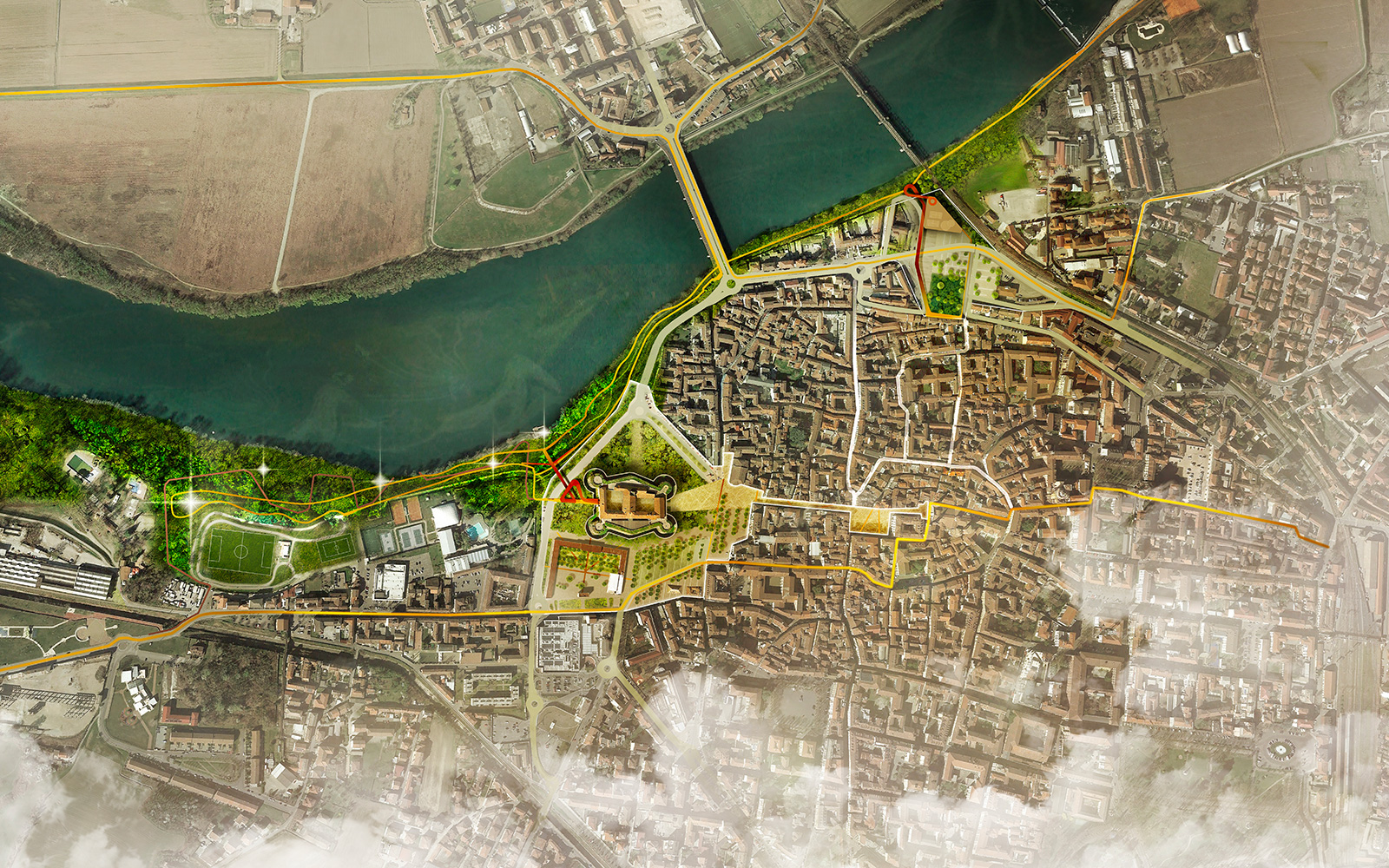
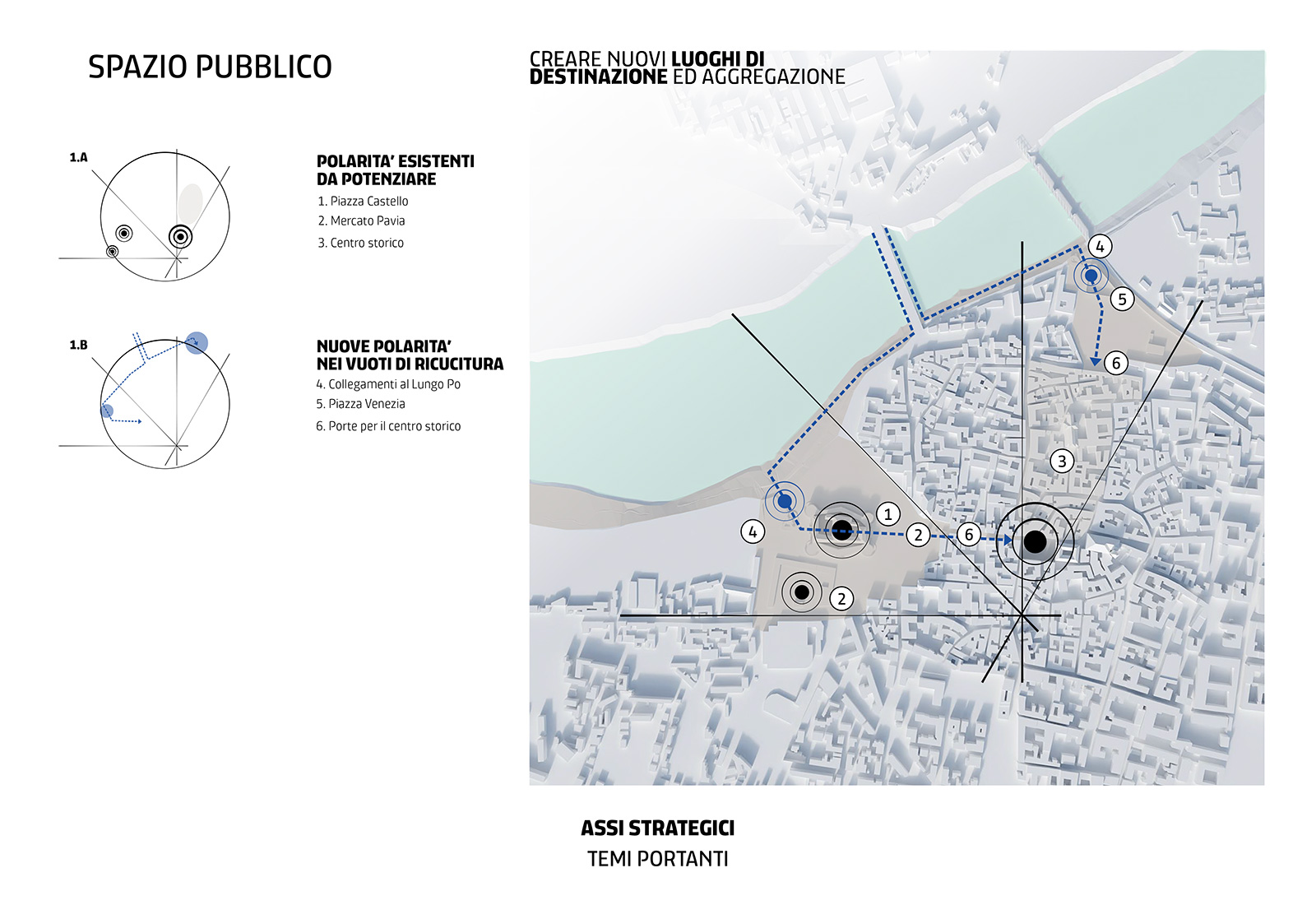
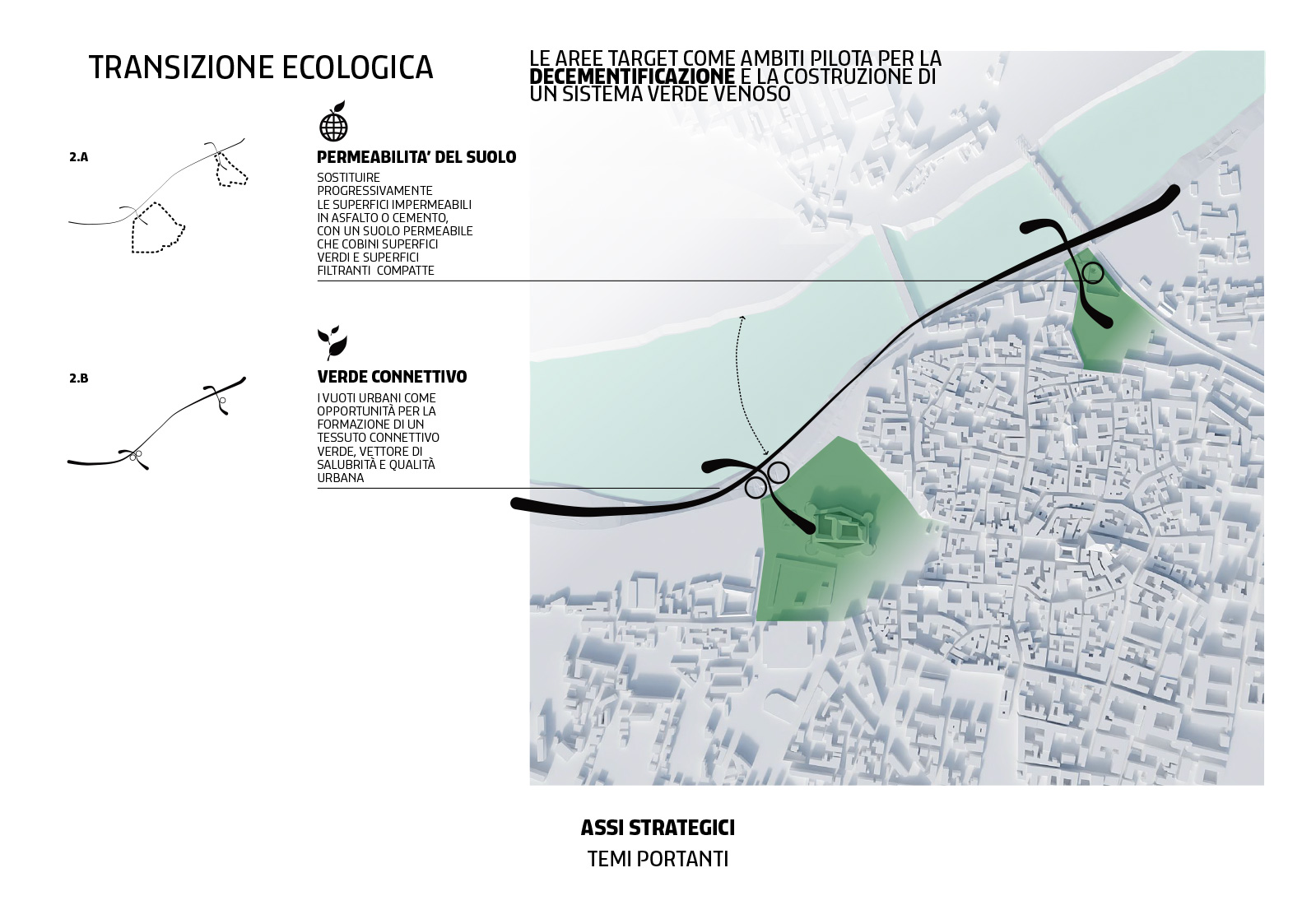
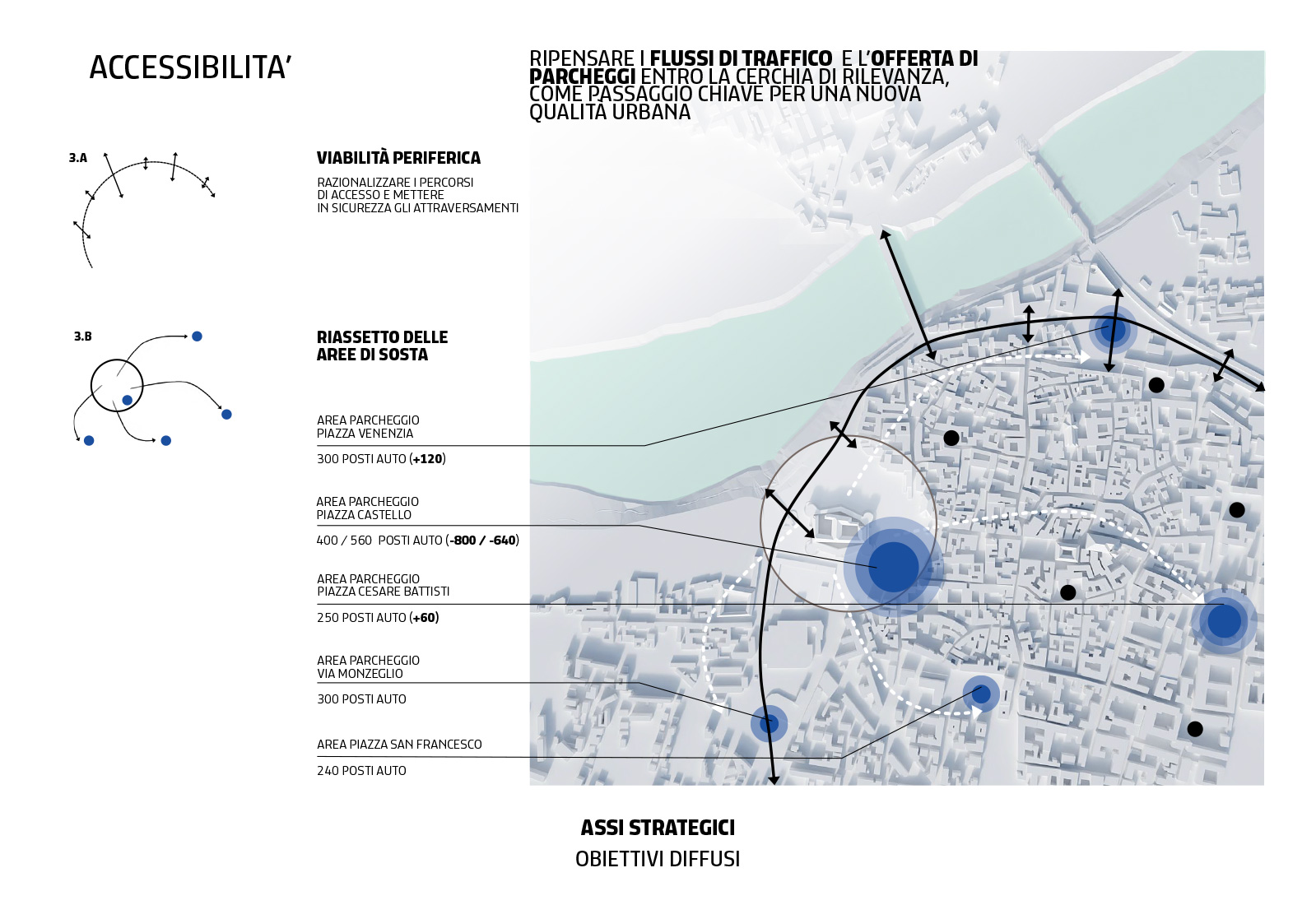
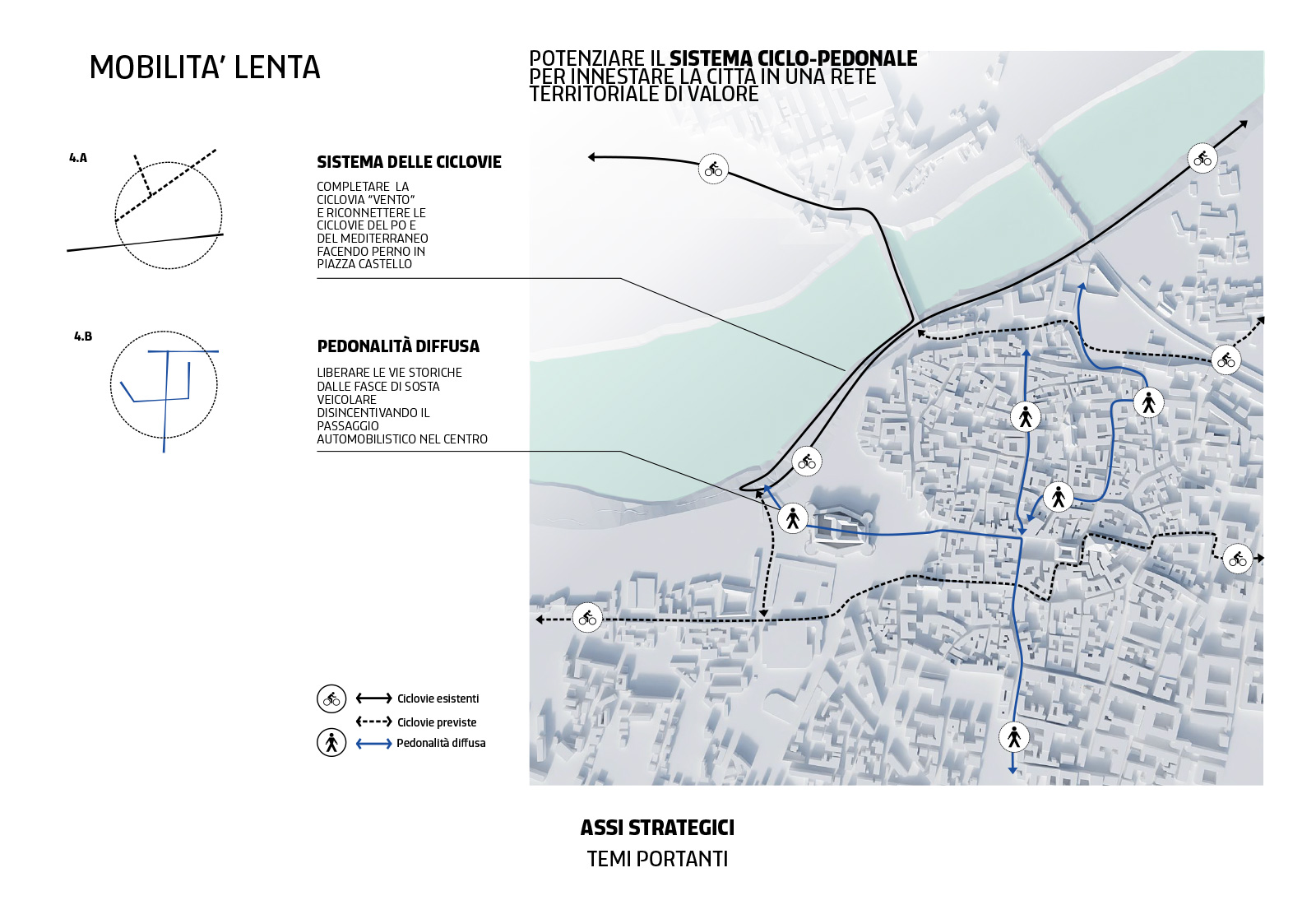
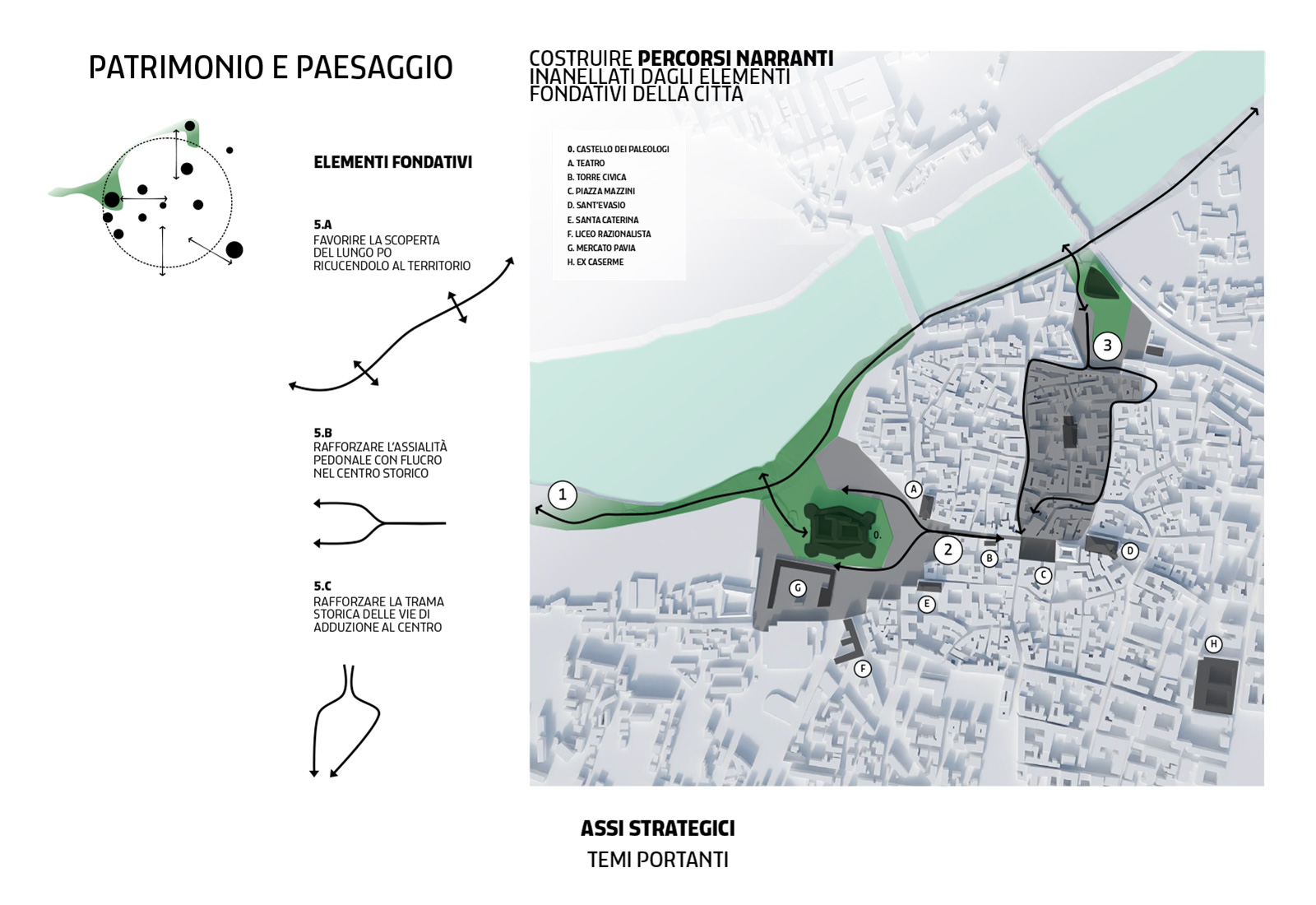
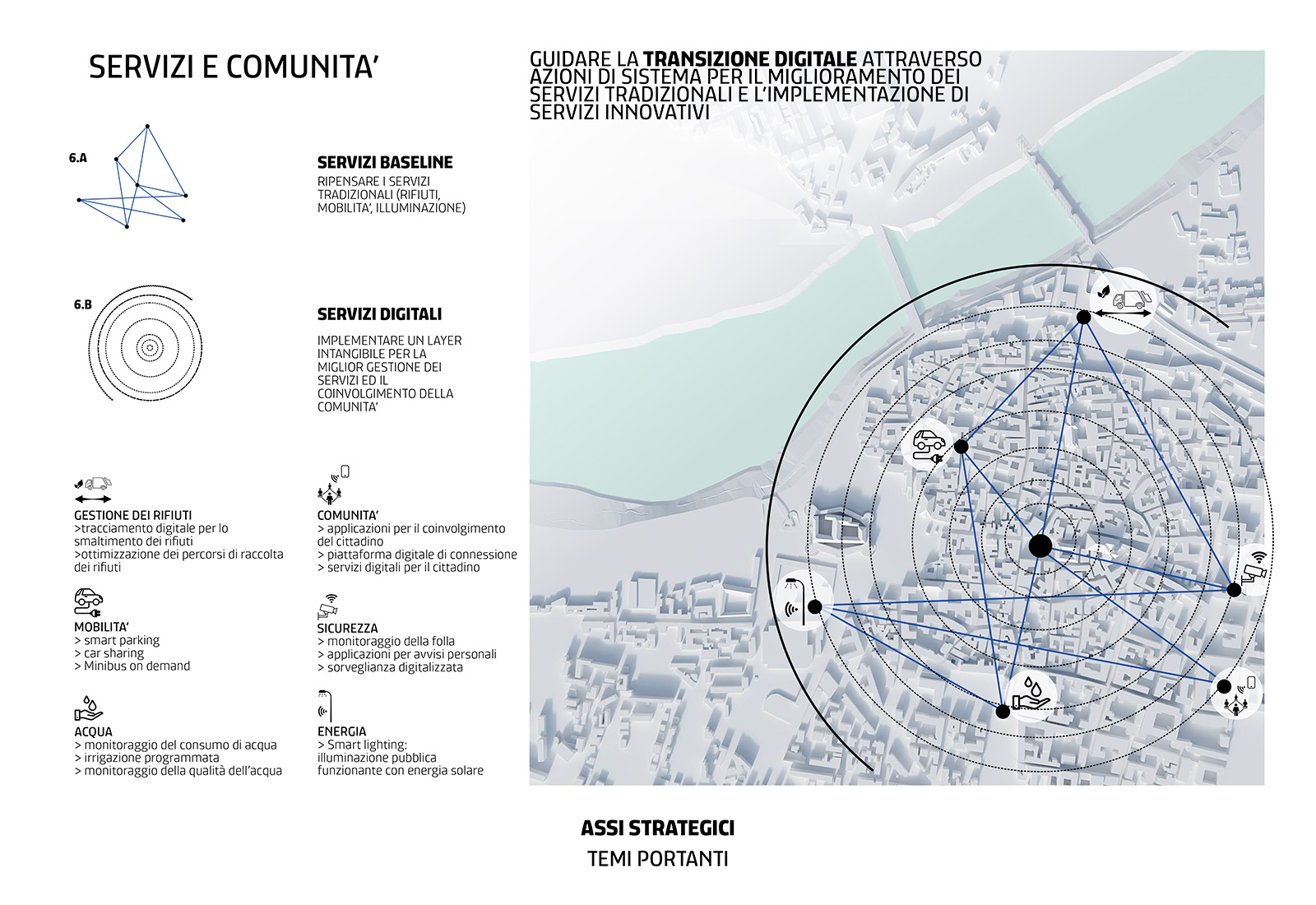
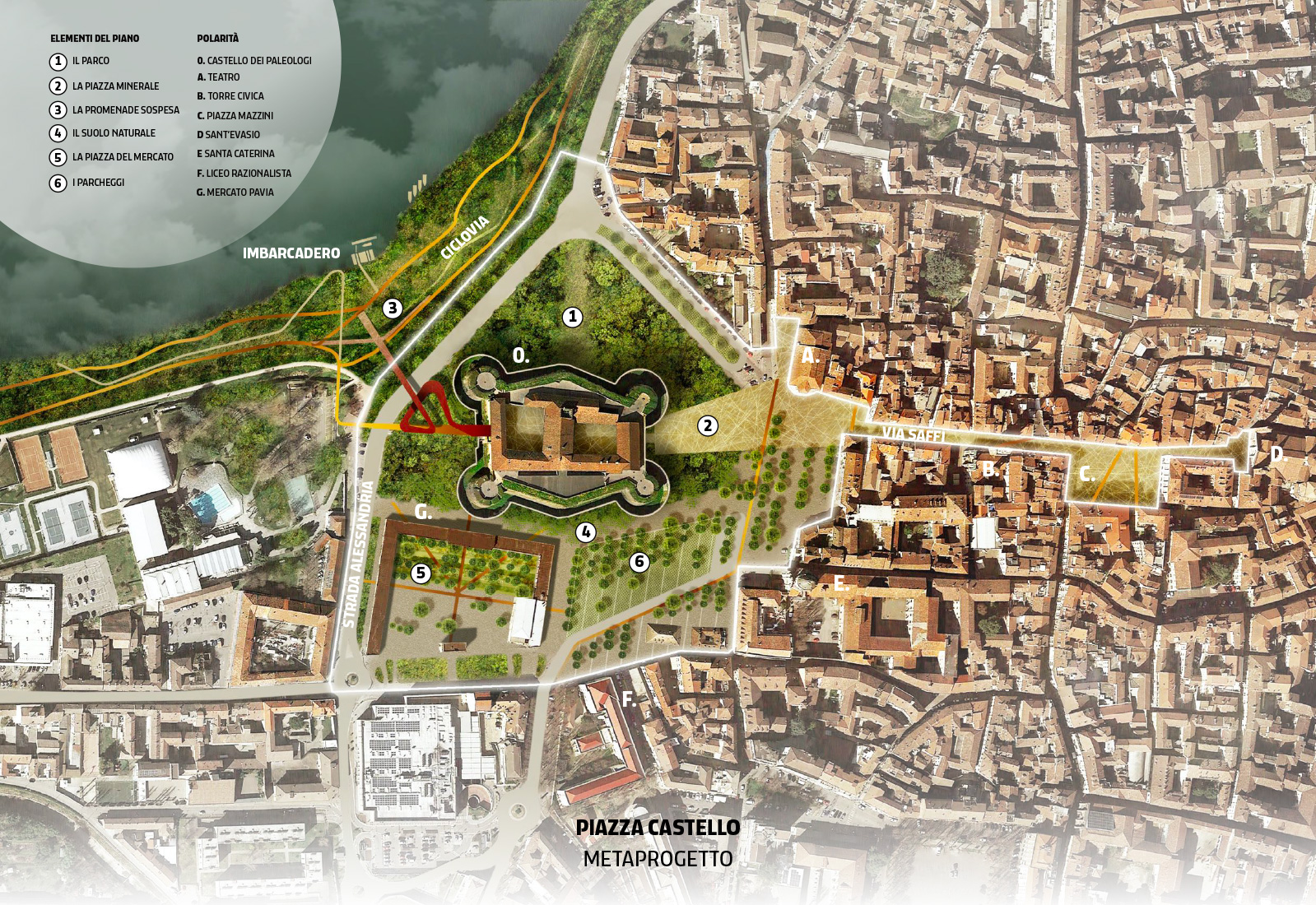
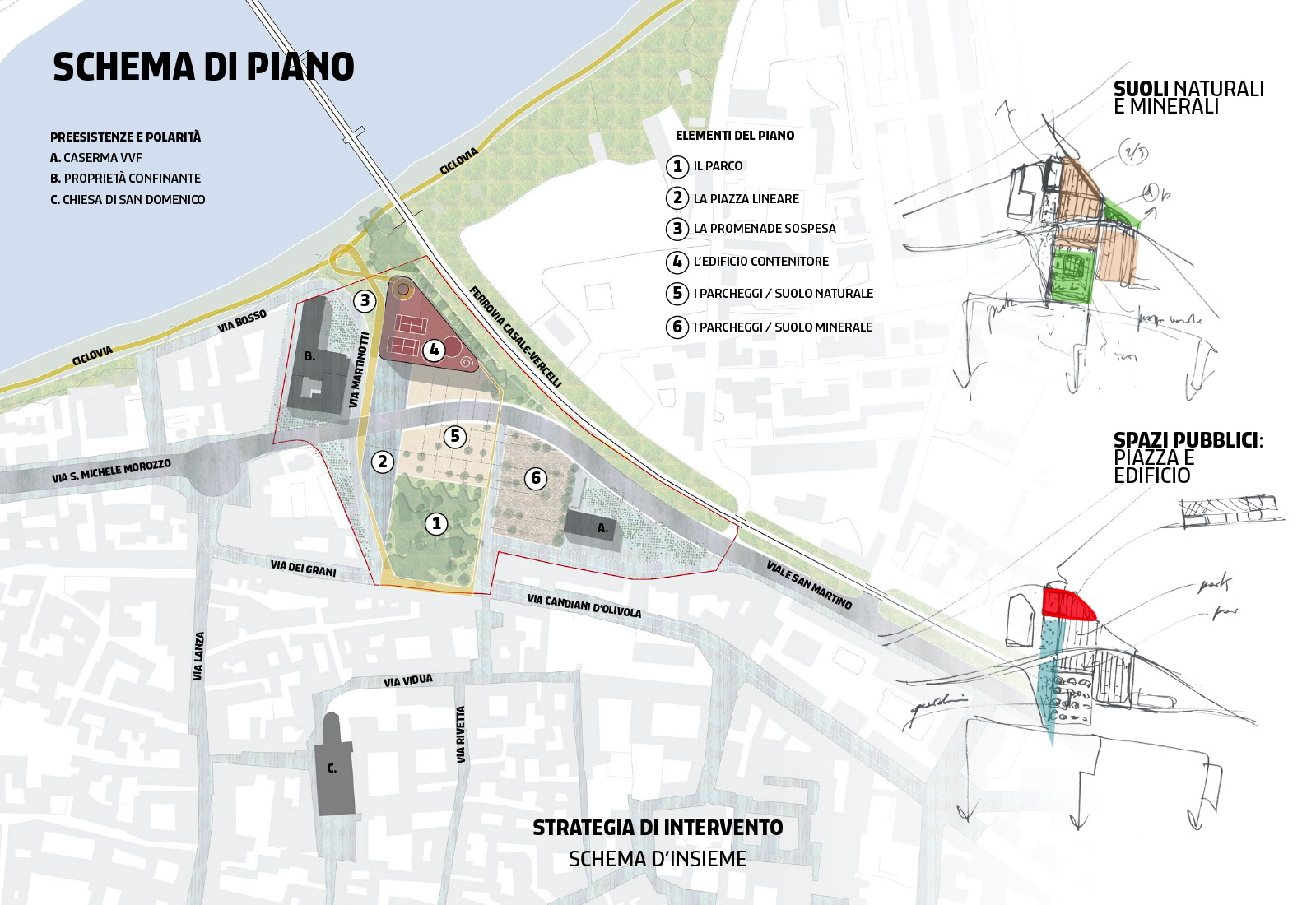
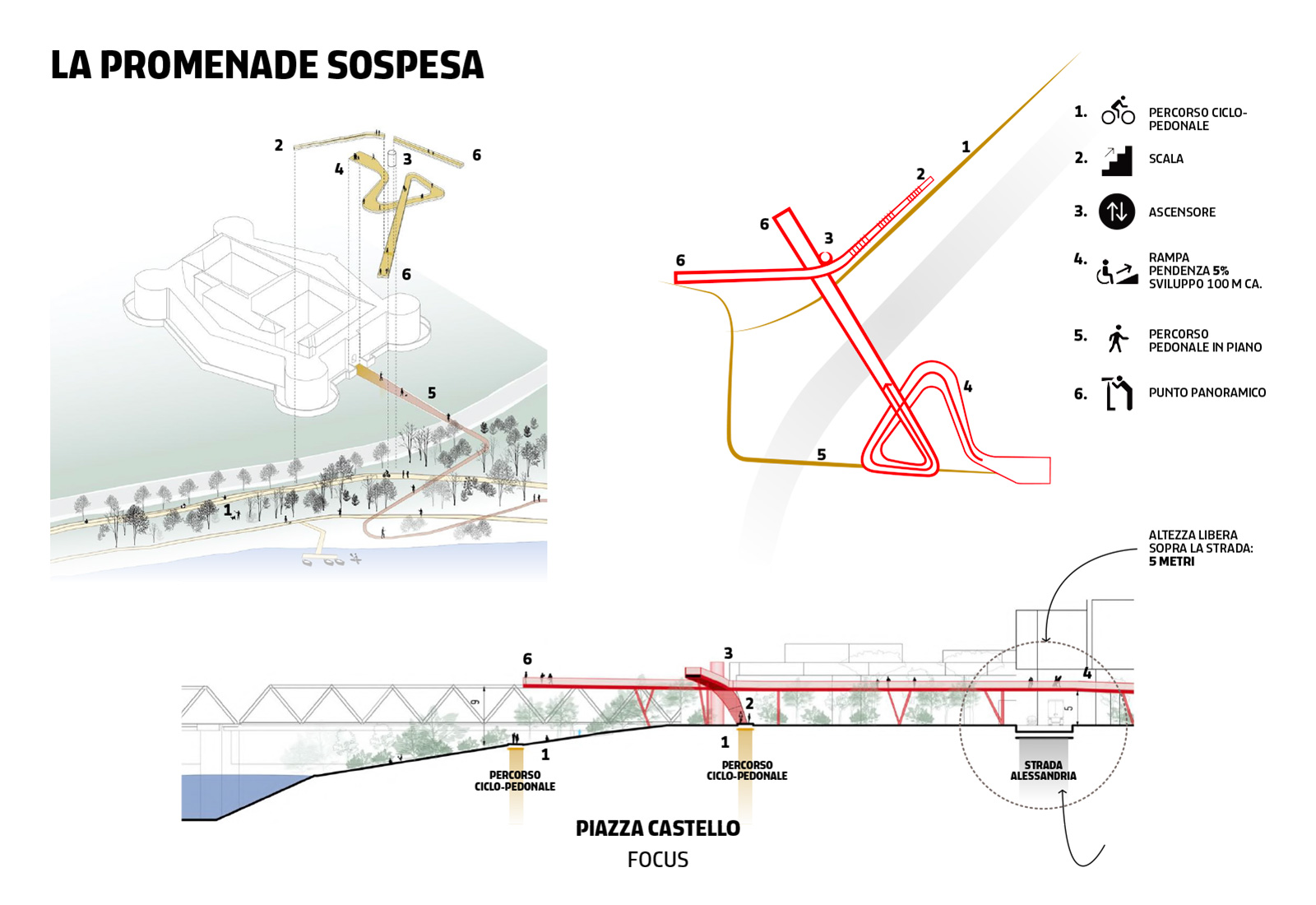
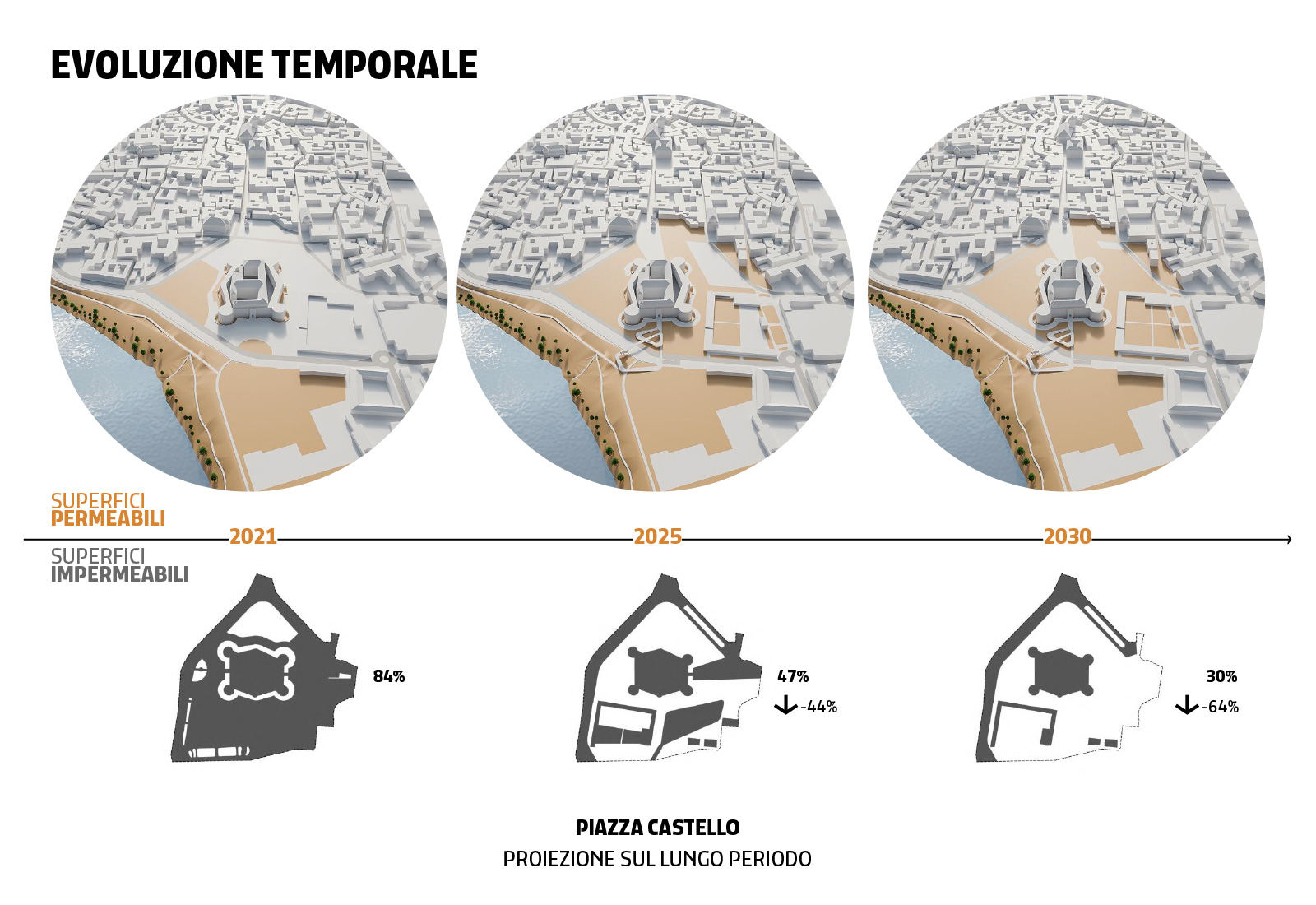
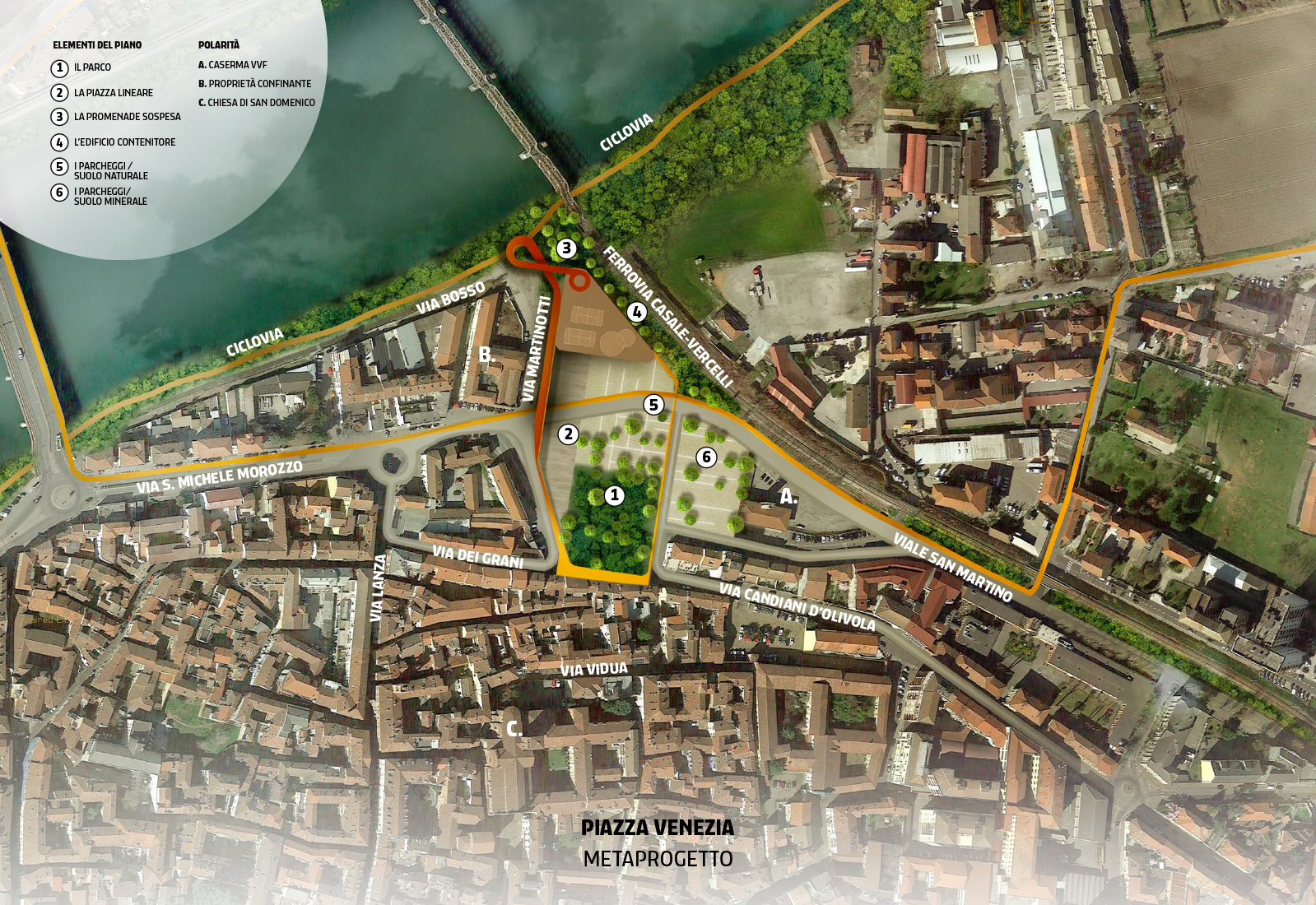
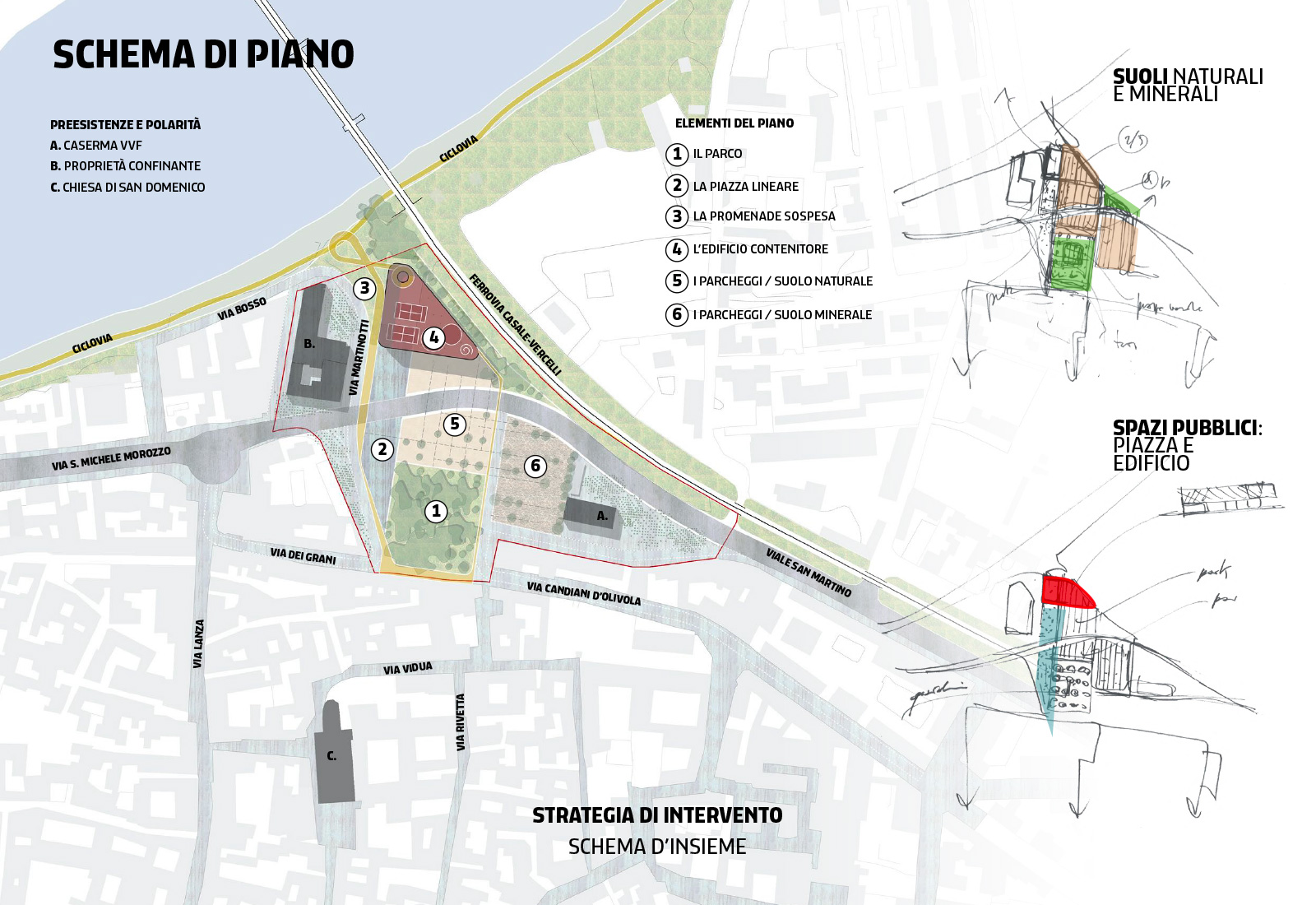
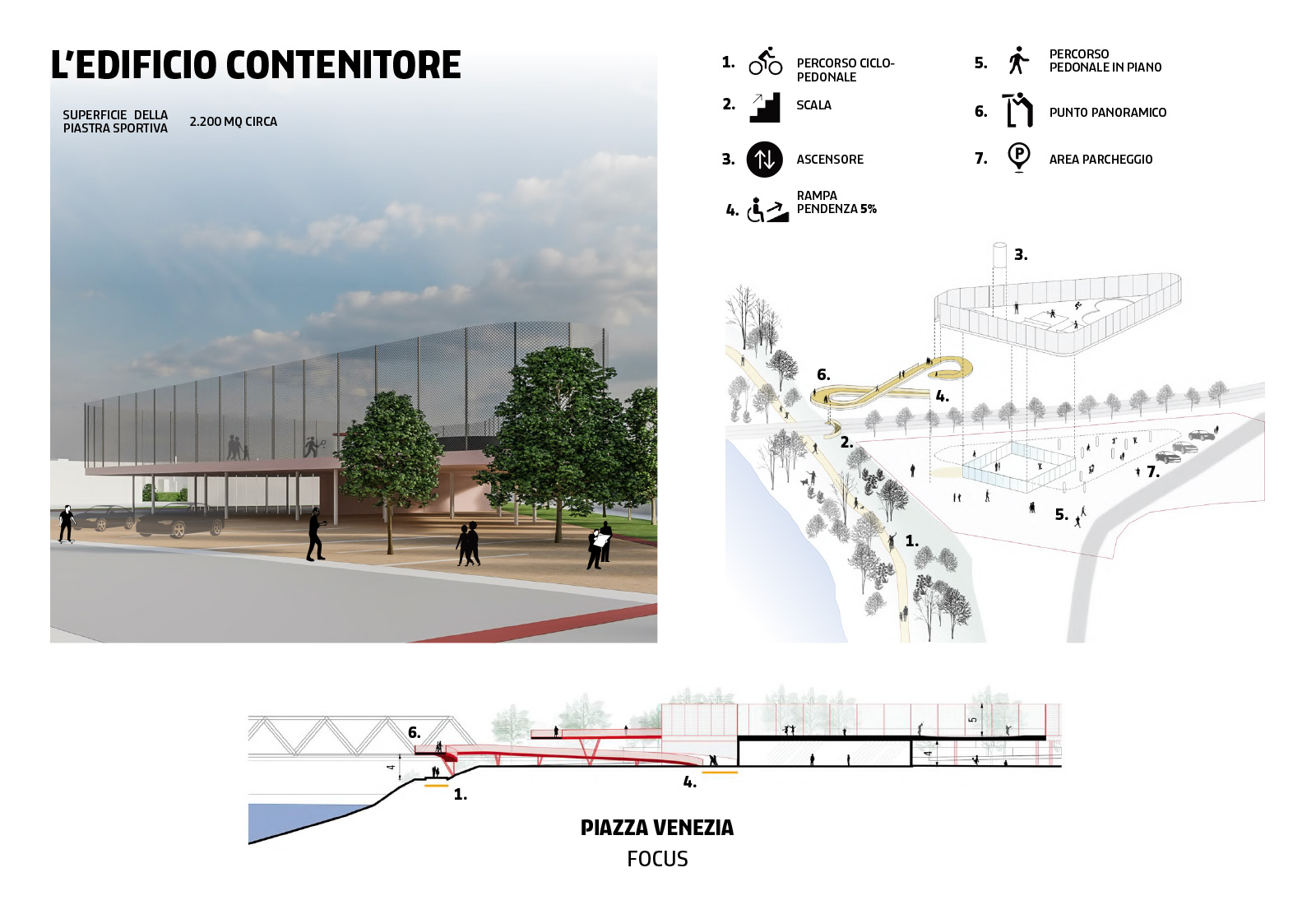
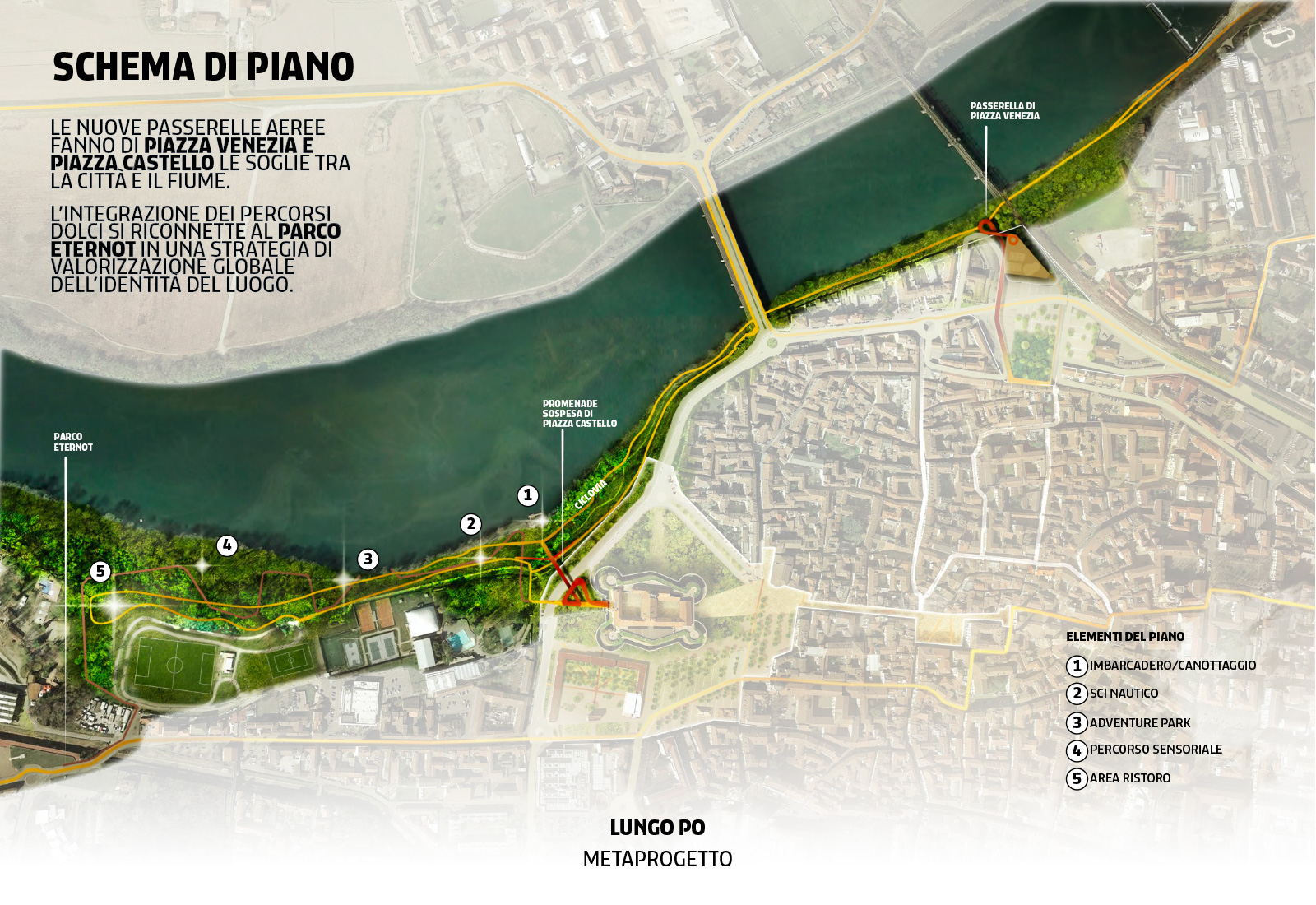
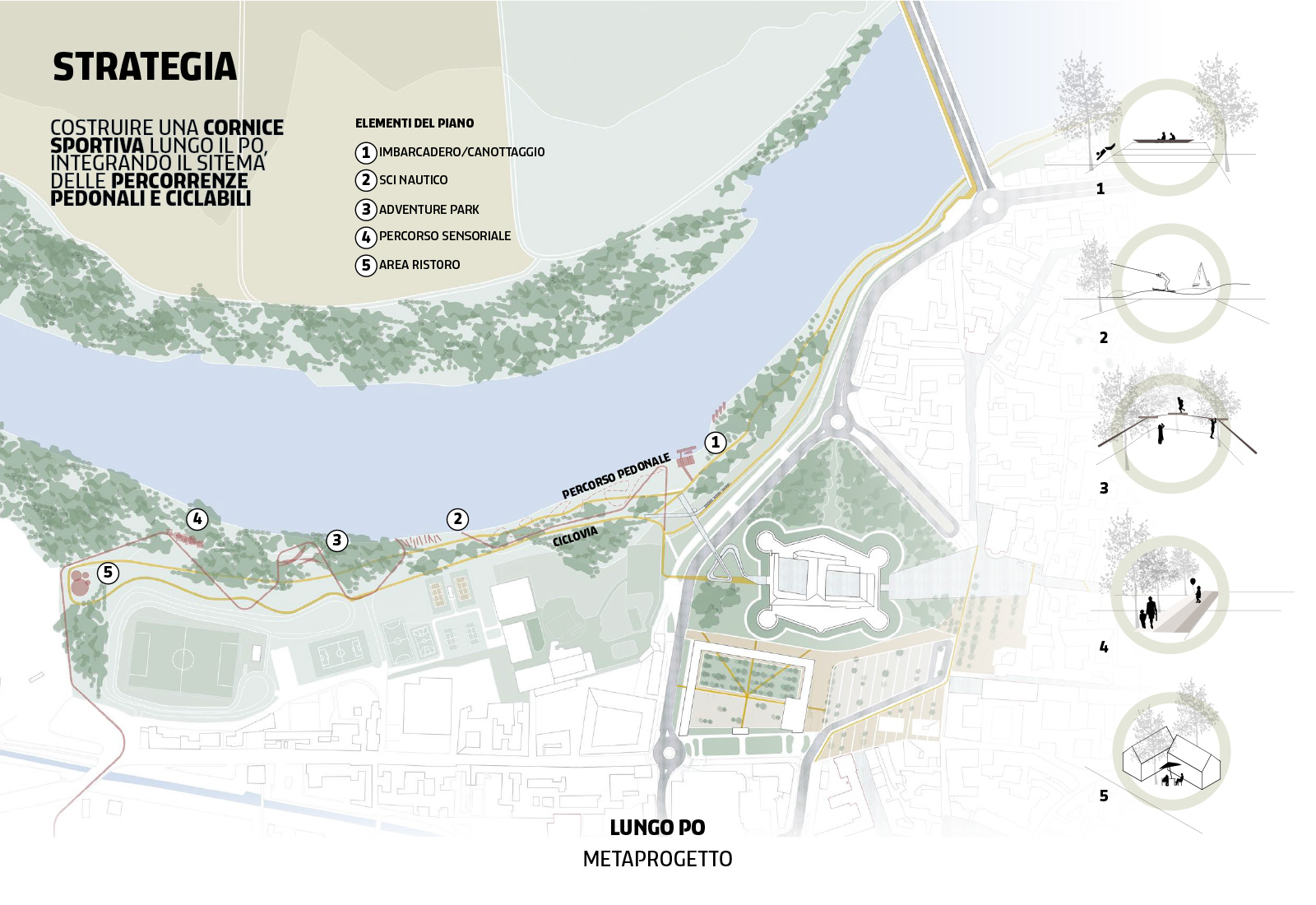
Casale Monferrato (Alessandria), Italy
technical and economic feasibility plan 2021
program: Enhancement of urban areas with strong strategic potential, redevelopment of public spaces and green areas, integrated urban mobility strategy through an Urban Sustainable Mobility Plan
> Piazza Castello area: 85.000 m2
– parking: 17.000 m2
– green areas: 27.000 m2
– permeable areas: 45.000 m2
> Piazza Venezia area: 34.000 m2
– parking: 7.000 m2
– green areas: 8.500 m2
– permeable areas: 13.000 m2
client: City of Casale Monferrato
Alfonso Femia / Atelier(s) Alfonso Femia with Michelangelo Pugliese
structural and services engineering: eFM
images: ©AF517
In fact, one of the most representative places of the city’s glorious past, the Castello dei Paleologi, is located in this area, whose large square suffers from an almost complete saturation of parking lots, which distort its role as a natural continuation of the historic center.
Moreover, in the area adjacent to the railway line, recent demolition work of the former fruit and vegetable market has freed up an urban void in the vicinity of Piazza Venezia, candidating the area as a possible decentralization for the parking lots, but also and above all as a possible lever for the regeneration of the neighborhood that gravitates around it.
Further opportunities radiate from these two strategic areas toward the historic center and the river bank (the Po waterfront), which today lack connections that can build an effective narrative of the place and its values.
A fundamental tool for revitalizing these places is the proper management of the entire area within the optimal pedestrian walking distance from Piazza Mazzini. In fact, at the margins of this relevant perimeter are a number of underutilized parking lots, the enhancement of which assumes an indispensable role in decongesting the valuable areas.
Therefore, the structure of the plan is based on 6 strategic directions or main themes:
1. Public space: conceiving a regenerative process that moves from the enhancement of existing attractors to the definition of new polarities in the reconnected voids.
2. Ecological transition: treating green areas as a system, radiating from the Po Riverfront into strategic voids. Replacing paved asphalt with new permeable soil, triggering a virtuous process of resource management.
3. Accessibility: improving peripheral accessibility to the urban center, redesigning crossroads and safely overcoming the disconnection with the river system. Relocating and optimizing the supply of
parking lots based on the actual parking demand.
4. Slow mobility: completing bicycle and pedestrian paths as an urban and territorial connecting fabric. Disincentivizing the transit of cars in the historic center to achieve widespread and safe pedestrian walkways.
5. Heritage and landscape: connecting the natural foundational element of the Po with the anthropic element of the historic center through the development of new axes and narrative paths.
6. Services and Community: rethink traditional services consistent with technological development and instances of sustainability. Establishing an intangible digital layer that can optimize service management and increase the sense of belonging.



